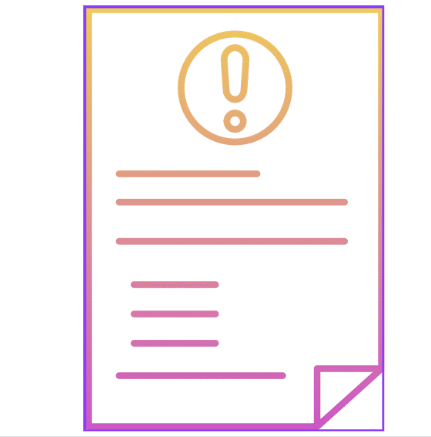Have you ever been faced with a complex issue or challenge that seemed overwhelming to tackle?
A problem statement acts as a compass, guiding your research or problem-solving efforts towards a clear objective.
Whether you’re conducting research, working on a project, or trying to solve a problem, a well-crafted problem statement is an essential tool that can guide your efforts and increase your chances of success.
In this blog, we will explore the importance of a problem statement and provide you with 8 effective tips on how to write a problem statement.
Short Summary
-
A well-written problem statement is essential for research and problem-solving endeavors.
-
Tips for writing an effective problem statement include clearly defining the problem, gathering relevant information, and analyzing root causes.
-
The problem statement should be specific, avoiding broad and vague statements.
-
Clear and precise language should be used, avoiding jargon and technical terms unless necessary.
-
The problem statement should highlight the importance and impact of the problem, consider the audience, provide context and background, and offer a desired solution pathway.
What Is A Problem Statement?

A problem statement is a concise and clear description of an issue or challenge that needs to be addressed. It serves as a foundation for research and problem-solving efforts by defining the problem, its context, and its significance. A well-crafted problem statement sets the stage for understanding, analyzing, and ultimately finding solutions to the identified problem.
In research, a problem statement outlines the specific problem or gap in knowledge that the study aims to address. It helps researchers define the scope of their work, identify research objectives, and guide the formulation of research questions or hypotheses. The problem statement also provides a rationale for the study, explaining why the research is important and how it contributes to existing knowledge.
In problem-solving contexts, such as in business or engineering, a problem statement helps identify and define the underlying issue that requires attention. It enables individuals or teams to clearly understand the problem, its causes, and its impact on stakeholders. With a well-defined problem statement, problem solvers can focus their efforts on finding effective solutions, developing strategies, and implementing action plans.
8 Effective Tips for Writing a Compelling Problem Statement

A well-written problem statement is the foundation of successful research and problem-solving endeavors. It provides a clear and concise description of the issue at hand, guiding the direction and purpose of the project. There are a few key elements to keep in mind when crafting a problem statement that can have a positive impact on the outcome of the project.
Here are 8 effective tips for writing problem statements:
Identify the Problem
A crucial first step in writing problem statements is to define the problem with clarity and precision. Avoid using vague or ambiguous language that may lead to misunderstandings. Instead, clearly articulate the specific issue or challenge that needs to be addressed.
For example, instead of saying, “There is a problem with customer satisfaction,” a more effective problem statement would be, “The current customer feedback indicates a significant decline in overall satisfaction levels over the past six months.”
Gather relevant information and data
To write an impactful problem statement, it is essential to gather relevant information and data that support the existence of the problem. Conduct thorough research, review available literature, and analyze any existing data related to the issue.
This step will help you build a solid foundation for your problem statement and demonstrate that the problem is not merely subjective, but based on objective evidence.
Analyze the root causes of the problem
Understanding the root cause of the problem is essential for addressing it effectively. Explore the underlying factors and conditions that contribute to the issue. By identifying the root causes, you can develop targeted solutions that tackle the problem at its core.
For instance, if a company is experiencing a high employee turnover rate, the problem statement could delve into the reasons behind it, such as lack of career growth opportunities or ineffective management practices.
Make it Specific
To ensure clarity and avoid confusion, it is important to focus on a single issue in your problem statement. Resist the temptation to address multiple problems simultaneously, as it can dilute the impact and make it difficult to formulate a proposed solution.
By narrowing down your problem statement to a specific issue, you can provide a clear direction for research and problem-solving efforts.
A problem statement should steer clear of broad and vague statements that do not offer specific insights. Instead, strive for specificity by using concrete and descriptive language.
Consider the example of a problem statement in the healthcare industry: “There is a need to improve patient safety protocols during surgery” can be refined to “The rate of surgical site infections within our hospital has increased by 15% over the past year, indicating a need to enhance sterilization and aseptic procedures.”
Use quantifiable metrics, if applicable
Where possible, incorporate quantifiable metrics into your problem statement. This helps in objectively measuring the problem and tracking progress towards an obvious solution. Numbers, percentages, or other relevant metrics can add credibility to your statement.
For instance, “The average customer complaint resolution time has exceeded 72 hours, leading to a decline in customer retention by 20% in the past quarter” provides a clear metric to illustrate the extent of the problem.
Use Clear and Precise Language
Avoid using complex or technical jargon that may alienate your audience. Use clear and concise language that is accessible to a wide range of readers. This allows your problem statement to be easily understood and communicated across various stakeholders.
While it’s important to keep the language simple, it’s also crucial to strike a balance. If your problem statement is intended for a specialized audience, you may need to use industry-specific terminology. However, ensure that you provide clear definitions or explanations for any technical terms you use.
A problem statement should be succinct and to the point. Avoid unnecessary elaboration and focus on conveying the essential information. Be mindful of the word limit and prioritize the most critical aspects of the problem.
Highlight the Importance and Impact
In your problem statement, emphasize the significance of addressing the problem. Explain the potential consequences of ignoring or neglecting the issue. Highlight how resolving the problem aligns with organizational goals or societal needs.
Articulate the potential negative outcomes or risks associated with not addressing the problem. This can create a sense of urgency and demonstrate the importance of finding a solution.
By showcasing the potential impact of the problem, you can garner support and resources for your problem-solving efforts.
In addition to discussing the consequences of not solving the problem, highlight the potential benefits and positive outcomes that can be achieved by addressing it. This can inspire stakeholders and generate enthusiasm for supporting your efforts.
Clearly communicate how solving the problem aligns with organizational objectives or contributes to the well-being of individuals or communities.
Consider the Audience
Consider the background, expertise, and familiarity of your audience with the subject matter. Adapt your language, examples, and level of technicality accordingly to ensure that your problem statement resonates with the intended readers.
Research your audience to understand their knowledge and perspective on the problem. This will help you frame the problem statement in a way that captures their attention and convinces them of its importance.
Employ language, terminology, and examples that are relatable to your audience. This enhances their understanding and engagement with the problem statement. Consider using real-life scenarios, case studies, or anecdotes to illustrate the relevance of the problem.
Provide Context and Background
Offer a brief overview of the context in which the problem exists. Provide a concise background that helps readers understand the circumstances surrounding the problem. This sets the stage for better comprehension and appreciation of the problem statement.
Acknowledge any previous attempts or existing solutions that have been implemented to address the problem. Briefly discuss their limitations or shortcomings, which may have led to the need for a new or alternative approach.
Present an overview of the current state of the problem, including any recent developments or trends that are relevant. This ensures that readers have a comprehensive understanding of the problem’s urgency and relevance.
Offer a Solution Pathway
While the main focus of a problem statement is to define the problem, you can also provide initial insights into potential solution pathways. Outline different approaches or strategies that could be explored to resolve the problem.
However, keep in mind that the primary objective of the problem statement is to define the problem itself, and the detailed exploration of viable solutions can be addressed in subsequent sections.
Provide a high-level overview of the steps or strategies that could be undertaken to address the problem. This demonstrates your understanding of the problem and showcases your ability to think critically about possible solutions.
Briefly mention the expected outcomes and benefits that could result from solving the problem. Additionally, acknowledge any potential challenges or obstacles that may arise during the problem-solving process. This provides a realistic perspective and prepares stakeholders for potential difficulties.
Revise and Refine
Once you have written the initial problem statement, review it for clarity and coherence. Ensure that the language is precise, the structure is logical, and the message is effectively communicated. Revise any sections that require improvement or further clarification.
Share your problem statement with peers or subject matter experts for feedback. Consider their suggestions and insights, and incorporate them into your revision process. Fresh perspectives can help identify areas that need refinement and enhance the overall quality of the problem statement.
Recognize that the problem statement may evolve as your understanding of the problem deepens. Be open to revisiting and updating the problem statement as you gather more information or insights. This ensures that the problem statement remains accurate, relevant, and aligned with the evolving needs of the project.
When Should You Write A Problem Statement?

A problem statement should be written at the early stages of a research project or problem-solving initiative. It is typically one of the first steps in the planning and formulation process. Here are some specific scenarios when you should write a problem statement:
-
Research projects: In academic or scientific research, a problem statement is typically written at the beginning of a study to clearly define the research problem or gap in knowledge that the study aims to address. It helps researchers focus their efforts, set research objectives, and guide the formulation of research questions or hypotheses.
-
Business or organizational projects: When undertaking a new project or initiative within a business or organization, writing a problem statement is crucial. It helps identify and define the specific issue or challenge that the project aims to solve. This provides clarity and direction to the project team and stakeholders, ensuring that everyone understands the problem at hand.
-
Grant proposals: When applying for research funding, grant proposals often require a problem statement. This is done to demonstrate the significance and relevance of the proposed research and to convince the funding body of the need for financial support. A well-written problem statement can strengthen the proposal’s chances of success.
-
Problem-solving initiatives: In problem-solving contexts, such as in quality improvement initiatives or engineering projects, a problem statement is vital. It helps frame the problem, understand its root causes, and identify potential solutions. By clearly articulating the problem, teams can develop effective strategies and action plans to address it.
-
Decision-making processes: When faced with complex decisions or challenges, writing a problem statement can provide clarity and structure to the decision-making process. It helps define the problem, explore its implications, and inform the evaluation of alternative solutions.
Conclusion
Crafting a compelling problem statement is the crucial first step on the path to success in research and problem-solving endeavors.
By following the eight effective tips outlined in this article, you can ensure that your problem statement captures the essence of the problem, engages stakeholders, and sets the stage for finding meaningful solutions.
Remember, a well-written problem statement provides clarity, drives focus, and propels you towards achieving your goals. So, take the time to refine and polish your problem statement, and watch as it becomes the beacon that guides your journey towards impactful outcomes.
Frequently Asked Questions
How long should a problem statement be?
There is no strict word or character limit for a problem statement. However, it is generally recommended to keep it concise and focused, typically ranging from a few sentences to a paragraph or two. The goal is to provide a clear and succinct description of the problem without unnecessary elaboration.
Can a problem statement be revised or modified later?
Yes, problem statements can be revised or modified as the project progresses or new information becomes available. It is natural for the problem statement to evolve as your understanding of the problem deepens. Regularly reviewing and updating the problem statement ensures its accuracy and relevance throughout the project. You can also take motivation from problem statement examples to improve your own problem statement.
Can a problem statement be written in a collaborative setting?
Absolutely! In fact, involving stakeholders and team members in the process of writing a problem statement can lead to more comprehensive and accurate problem identification. Collaborative discussions and brainstorming sessions can help gather diverse perspectives and insights, ensuring that the problem statement reflects the collective understanding of the issue.
Is it necessary to include statistics or data in a problem statement?
While including statistics or data in a problem statement can add credibility and provide evidence for the existence of the problem, it is not always mandatory. The need for statistics or data depends on the nature of the problem and the availability of relevant information. If quantitative data is available and supports the problem statement, it can strengthen the overall impact of your statement. You can also include the problem’s financial costs.















